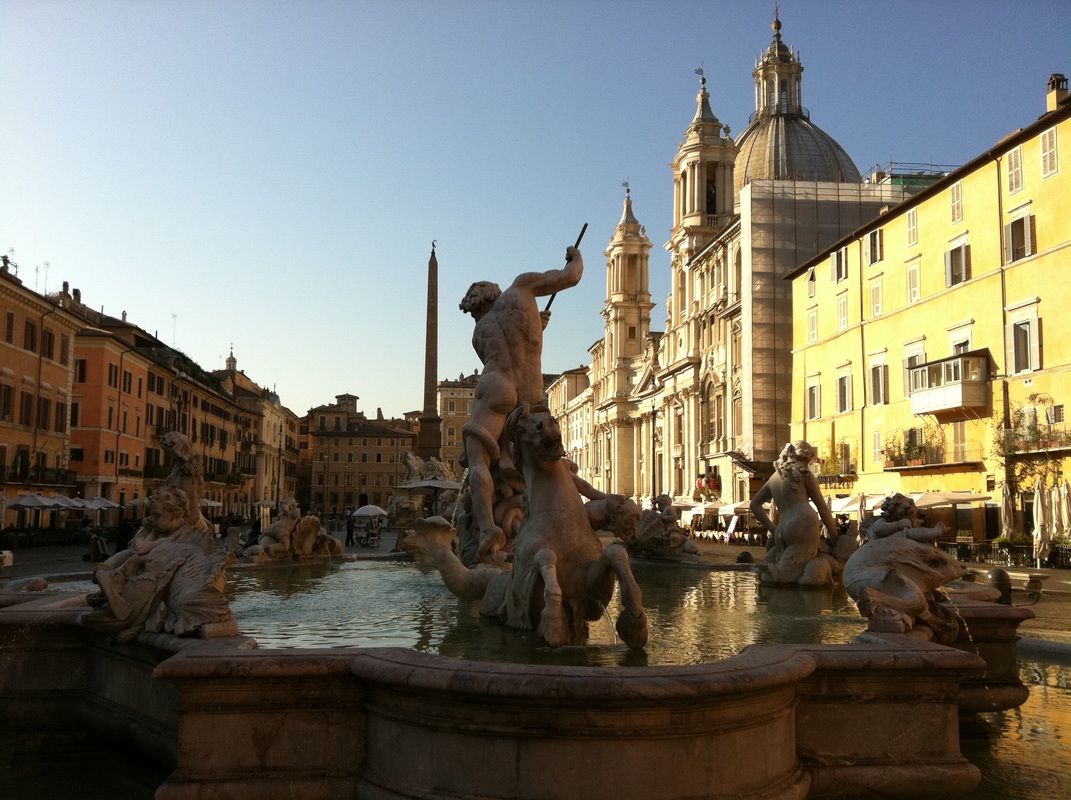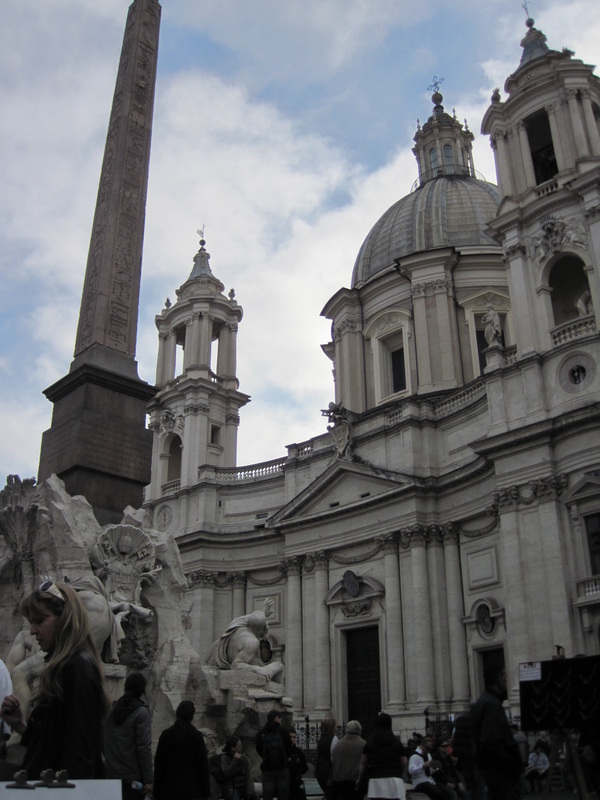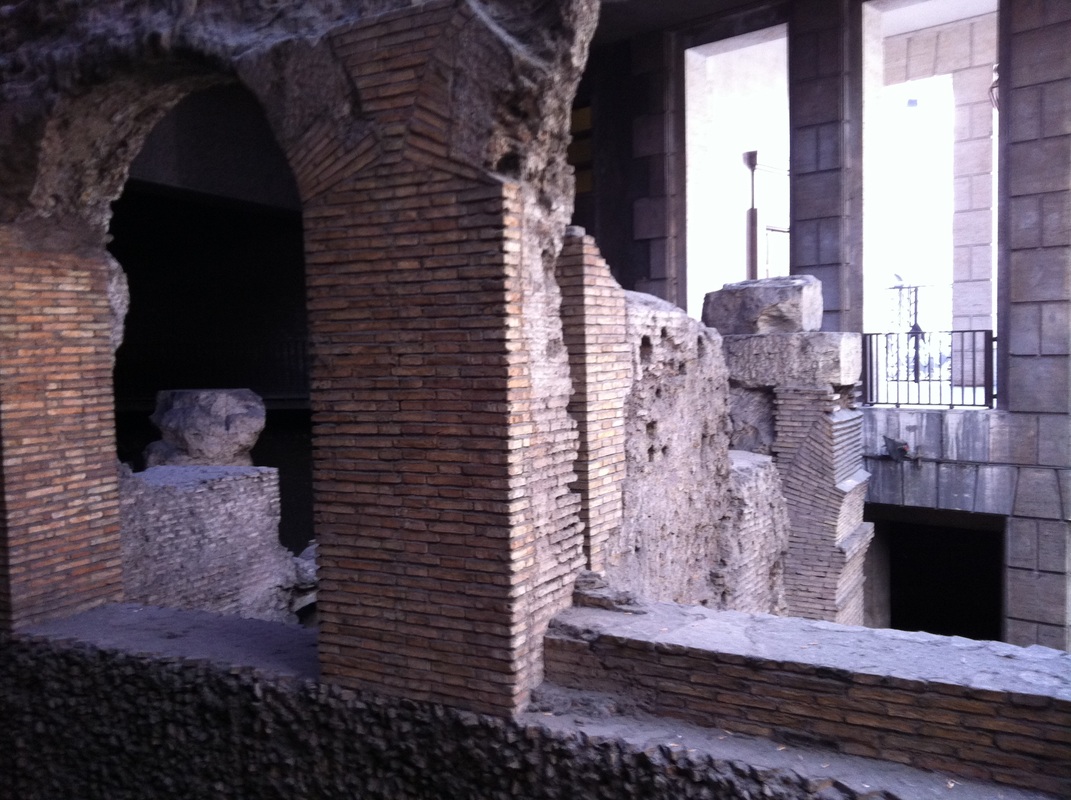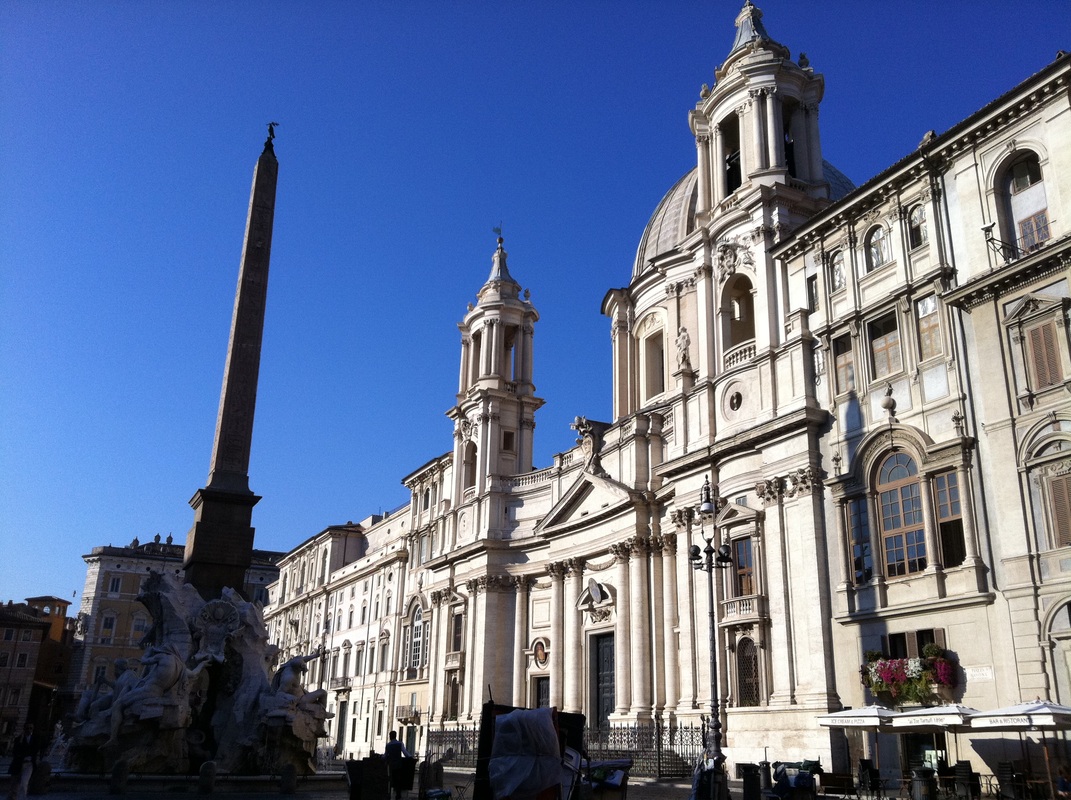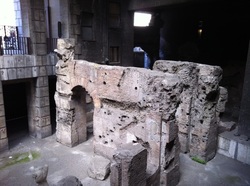
| The third emperor of the Gens Flavia, Domitian had it built around 86 AD to serve the Greek athletic games he highly valued, while the Romans did not like considering them immoral. The stadium measured 275 meters long by 106 wide. The auditorium , which hosted 30,000 spectators was supported by masonry pillars. The difference between Stadium and Circus is that the track of a Circus, to allow chariot races, was divided in two by a "spina" a central up level path decorated with obelisks, and needed at least 500m in length; the Stadium , in contrast, was a large arena without any division. The only still visible vestiges of the Stadium are in Piazza di Tor Sanguigna. The stadium remained in operation until the fifth century. The raids of the barbarians that preceded and followed the fall of the Western Roman Empire caused the impoverishment of the city and decrease its number of inhabitants. The Romans exploited as houses the imperial monuments: In fact, the top floor of the stadium was turned into poor citizen’s homes. The concrete of the first century AD is still the backbone of modern buildings. Important discoveries about the history and transformation of the square took place after the renovation of a building located at number 62. During the works an ambulatory of the Stadium was discovered: underground rooms of 350 square meters whose spaces were reused at the beginning of the dark ages. Towards the fifth century a laboratory was created in the stadium’s ground floor where marbles recovered from the vicinity were cut to create inlaid floors. Archaeologists have found 3,500 fragments of marbles of “pavonazzetto " , African " antique yellow " or greek “cipollino” taken from imperial monuments. Then the studio was abandoned and the same space was used as a cemetery: 16 burials were found dating back to the sixth century , containing the remains of adult men and women. At the end of the Middle Ages in what had been the arena a nauseating landfill appeared: for centuries the remains of the tanneries, dyeing and butcher shops were piled there. The City council of Cola di Rienzo, in 1363 , forbade the dump with a law, but was not respected. Finally the landfill ceased in 1477, when Pope Sixtus IV decided to install a market in the square. Renaissance churches and palaces appeared and the popes determined the birth of the actual square with its monumental aspect as a representation of their power. |
